
by Renee Bean | May 23, 2024 | Business Management, Cybersecurity, Disaster Recovery, I.T., IT Support Brisbane, Services
Picture this: Your business is thriving, operations are smooth, and everything seems perfect. But then, disaster strikes – a cyber attack, a hardware failure, or even a simple human error wipes out your critical data in an instant. It’s a nightmare scenario, but it’s one that can be prevented with a simple yet powerful solution: regular backups. In this article, we’ll dive into the world of data protection and uncover why regular backups are the unsung heroes of business resilience.
Understanding Regular Backups
Regular backups serve as a critical key component of the Essential 8 framework, providing a foundational pillar for resilience in the face of cyberthreats and data loss. Regular Backups involve creating copies of your critical data and storing them in a separate location from your primary system. These backups serve as a safety net, allowing you to restore your data in the event of data loss or system failure. By maintaining up-to-date backups, you can minimise downtime, protect against data loss, and ensure business continuity.
Why Regular Backups Matter |
| 1 | Protection Against Data LossData loss can occur due to various reasons, including hardware failures, cyber-attacks, and accidental deletion. Regular backups provide a reliable means of recovering lost data and minimising the impact of such incidents on your business operations. |
| 2 | Resilience Against RansomwareRansomware attacks can encrypt your data and render it inaccessible until a ransom is paid. With regular backups, you can restore your data from a clean backup, avoiding the need to pay the ransom and mitigating the impact of the attack on your business. |
| 3 | Compliance RequirementsMany industries have regulatory requirements regarding data protection and retention. Regular backups help ensure compliance with these regulations by providing a means of preserving data integrity and availability. |

How to Implement Regular Backups |
| 1 | Identify Critical Data:Start by identifying the data that is essential for your business operations. This may include customer records, financial data, intellectual property, and other sensitive information. |
| 2 | Choose Backup SolutionsSelect backup solutions that meet your business needs and budget. Options include on-site backups, cloud-based backups, and hybrid solutions that combine both approaches. Consider factors such as data volume, recovery time objectives, and security features when choosing a backup solution. |
| 3 | Establish Backup ScheduleDetermine how frequently you need to perform backups based on your data recovery objectives and the frequency of data changes. For critical data, daily or real-time backups may be necessary, while less critical data may require less frequent backups. |
| 4 | Test Backups RegularlyRegularly test your backups to ensure they are functioning correctly and that you can successfully restore data when needed. Conducting backup tests helps identify any issues or gaps in your backup strategy and allows you to address them proactively. |
| 5 | Automate Backup ProcessesWhenever possible, automate backup processes to minimise manual intervention and ensure consistency. Use backup software or tools that offer scheduling, monitoring, and reporting features to streamline the backup process and ensure data integrity. |
Regular backups are a fundamental component of a robust cybersecurity strategy, providing essential protection against data loss, ransomware attacks, and regulatory non-compliance. By implementing regular backups and following best practices, you can safeguard your business’s critical data and ensure its resilience in the face of unforeseen events. Don’t wait until it’s too late – start backing up your data regularly today to protect your business’s future. For expert guidance and support in implementing regular backups for your business, contact KeyTech. We specialise in cybersecurity solutions tailored to meet the unique needs of small businesses, helping you safeguard your data and ensure business continuity.
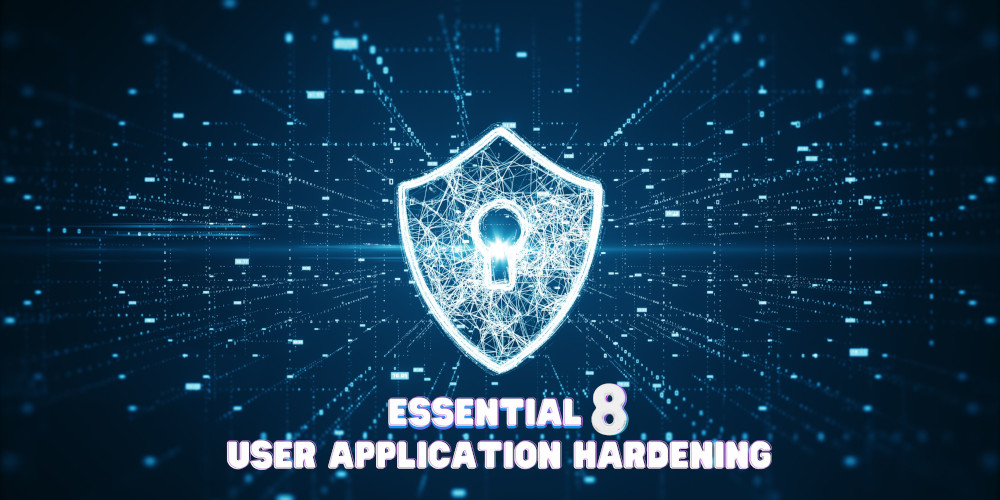
by Renee Bean | May 15, 2024 | Cybersecurity, Disaster Recovery, I.T., IT Support Brisbane, Microsoft, Services
In a world where every click and keystroke can pose a potential risk, fortifying your business against cyber threats is no longer a choice — it’s a necessity. Picture this: your business is like a fortress, with its gates constantly besieged by unseen digital adversaries. Now, imagine if you could reinforce those gates, making them impervious to attack. That’s precisely what User Application Hardening does—it strengthens the armour of your business applications, turning them into impenetrable bastions of security. Let’s delve into this crucial aspect of cybersecurity, unravelling its secrets and uncovering how it can safeguard your business from the ever-looming threat of cybercrime.
What is User Application Hardening?
The purpose of User Application Hardening is to create multiple layers of security to make it increasingly difficult for bad actors to compromise a user’s device through a user-based application. It’s like building a fortress with layers of defence—if one layer is breached, there are multiple security measures in place to thwart any further intrusion attempts. This approach ensures that even if one security measure is bypassed, others remain intact to safeguard the organisation’s computer systems from potential threats.
Why is User Application Hardening Important? |
| 1 | Minimising VulnerabilitiesBy hardening your applications, you can minimise the potential vulnerabilities that attackers could exploit to gain unauthorised access to your systems. |
| 2 | Protecting Against ExploitsCybercriminals often target known vulnerabilities in popular applications. By hardening these applications, you can protect your business from falling victim to such exploits. |
| 3 | Enhancing Data SecurityHardening your applications helps safeguard sensitive business data from unauthorised access, ensuring compliance with regulatory requirements and maintaining customer trust. |
How Can You Implement User Application Hardening? |
| 1 | Regular UpdatesEnsure that all applications are kept up-to-date with the latest versions, as updates often include patches for known security vulnerabilities. |
| 2 | Configuration ManagementConfigure application settings to minimise security risks and disable unnecessary features that could pose a threat. |
| 3 | Endpoint ProtectionImplement endpoint protection solutions that include application control features to restrict the execution of unauthorised or untrusted applications. |
| 4 | Employee TrainingEducate your employees about the importance of application security and provide guidelines for safe application usage. |

How KeyTech Can Assist You
At KeyTech, we understand the challenges that small businesses face in today’s digital environment. Our team of cybersecurity experts specialises in helping businesses like yours implement robust security measures, including User Application Hardening. From conducting security assessments to implementing advanced endpoint protection solutions, we are here to support you every step of the way.
Do not wait until it’s too late to secure your business. Contact KeyTech today to learn how we can help you strengthen your cyber defences and protect your valuable assets.
By prioritising User Application Hardening as part of the Essential 8 framework, you can safeguard your business against evolving cyber threats and ensure long-term success in today’s digital world.
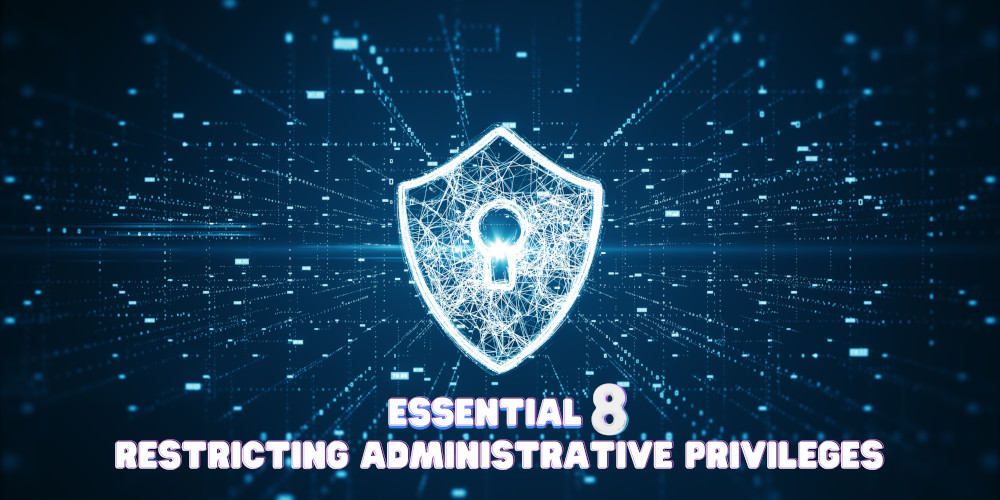
by Renee Bean | Mar 12, 2024 | Cybersecurity, I.T., IT Support Brisbane, Solutions
Welcome back to our series on the Essential 8, a collection of strategies recommended by the Australian Cyber Security Centre (ACSC) designed to fortify small businesses against cyber threats. These practical measures are crucial in today’s digital age, offering a shield against the ever-evolving landscape of cyber risks. Today, we dive into the fifth component of the Essential 8: Restricting Administrative Privileges. Understanding and implementing this strategy is key to safeguarding your business’s digital assets and information. Let’s explore what restricting administrative privileges entails, why it’s critical for your business’s security, and how to effectively apply it in your operations.
What It Means to Restrict Administrative Privileges
Imagine administrative privileges as a master key to your business’s digital kingdom. This key unlocks the ability to make significant changes to systems and networks, bypass security protocols, and access confidential information. Just as you wouldn’t hand out keys to your physical premises to everyone, it’s crucial to be judicious about who is granted these digital privileges. Restricting administrative privileges means limiting the number of people who have this master key, ensuring only those who absolutely need it for their job functions can access it.
Why Restricting These Privileges Matters
Hackers are constantly on the lookout for vulnerabilities they can exploit. Accessing a system with administrative privileges is akin to finding a treasure trove; it enables them to cause more damage, spread malware, steal sensitive data, and make their presence on your network persistent. By limiting these privileges, you’re effectively adding an extra layer of security, making it more difficult for attackers to take control of your systems.
Furthermore, a system with fewer administrators is easier to manage and less prone to unintentional misconfigurations or changes. This stability is vital for smooth day-to-day operations and maintaining the integrity of your business’s data.
Common Mistakes to Avoid
It’s not enough to simply reduce the number of privileged accounts or share them among team members. These approaches can create security gaps, making it easier for attackers to exploit your systems. Other ineffective practices include temporarily granting administrative privileges or placing standard user accounts into groups with administrative access. These strategies might seem to offer convenience but compromise security.
How to Effectively Restrict Administrative Privileges
- Identify Necessary Administrative Tasks: Determine which specific tasks require administrative rights.
- Validate Staff Requirements: Ensure that only employees who need these rights to perform their job duties have access.
- Create Attributable Administrative Accounts: Provide designated accounts for users who need administrative access, ensuring these accounts have the minimal level of access necessary.
- Regularly Revalidate Access: Periodically review who has administrative access, especially after role changes, departures, or security incidents.
Keeping Privileged Accounts Safe
To minimise risks associated with privileged accounts, ensure they:
- Avoid unnecessary internet access, except when required for specific tasks like managing cloud services.
- Adhere to secure management practices, reinforcing your defence against potential cyber threats.
Restricting administrative privileges is not just about locking down access; it’s about creating a more secure, manageable, and stable digital environment for your business. By carefully controlling who has these rights and how they are used, you protect your business from internal and external threats, ensuring operational continuity and security. Stay tuned for more insights as we continue to explore the Essential 8 and how each component fortifies your cybersecurity posture.
Secure management practices are vital for your business security and stability. Don’t hesitate to reach out to KeyTech for expert advice and assistance on the Essential 8 and how to apply them in your environment. Stay secure, stay protected!
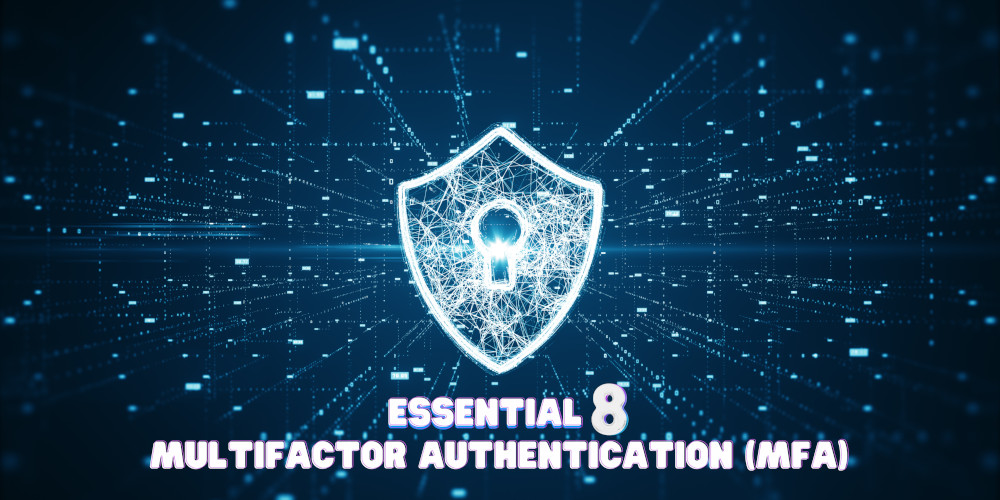
by Renee Bean | Feb 14, 2024 | Cybersecurity, IT Support Brisbane
In today’s digital world, small businesses face a growing onslaught of cyber threats, with the potential for significant financial and reputational harm looming large. Within this landscape, the Australian Cyber Security Centre’s Essential Eight strategies emerge as a beacon of guidance, with Multi-Factor Authentication (MFA) standing as its critical third component. This article dives deep into MFA, an essential layer of defence that extends beyond mere passwords, demanding additional verification that thwarts unauthorised access. By adopting MFA, you’re not just adding a security measure; you’re embracing a foundational principle of the Essential Eight to fortify your business against increasingly sophisticated cyber-attacks. Let’s explore how this powerful tool can be your ally, securing your digital assets against the backdrop of an ever-evolving threat landscape.
Importance of Multi-Factor Authentication:
- Enhanced Security: MFA significantly reduces the risk of unauthorised access by requiring multiple forms of identification.
- Phishing Resistance: Implementing MFA methods resistant to phishing attacks adds an extra layer of protection, reducing vulnerabilities.
- Credential Theft Prevention: MFA makes it challenging for cybercriminals to use stolen credentials effectively, thwarting their attempts.
Unlocking Enhanced Security: Navigating Multi-Factor Authentication (MFA) Choices for Your Business
In today’s digital age, safeguarding your business’s online assets is more critical than ever. Multi-Factor Authentication (MFA) stands out as a powerful shield, demanding two or more verification factors to confirm a user’s identity. These factors include something you know (like a password), something you have (like a security key), and something you are (like a fingerprint). This multi-layered approach significantly bolsters your defence against unauthorised access attempts.
But with various MFA methods available, how do you choose the right one for your business? The decision should be tailored to your specific security requirements and operational context. Each authentication method brings its unique strengths to the table, ensuring that your choice effectively balances security with user convenience.
Let’s dive into the world of MFA to understand the options at your disposal and how they can fortify your business against cyber threats.
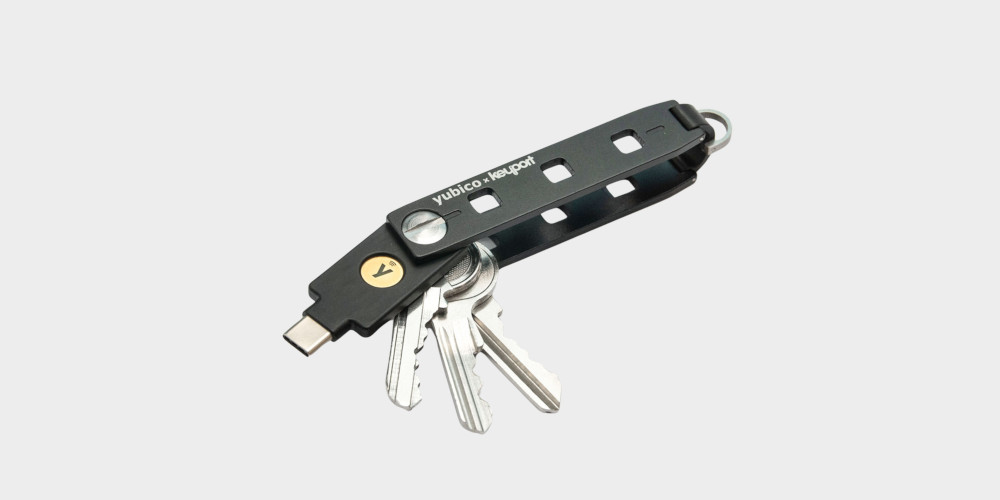
Security Keys:
What They Are: Security Keys: Physical devices that provide secure authentication through public key cryptography.
Why Use Them: Ideal for high-security requirements such as remote access solutions.
Example: Employees use a physical USB device (security key) to authenticate their identity, providing a robust defence against unauthorised access.
Security Considerations: Ensure physical security of the keys; loss or theft can lead to unauthorised access if not quickly mitigated through revocation of the keys’ access privileges.
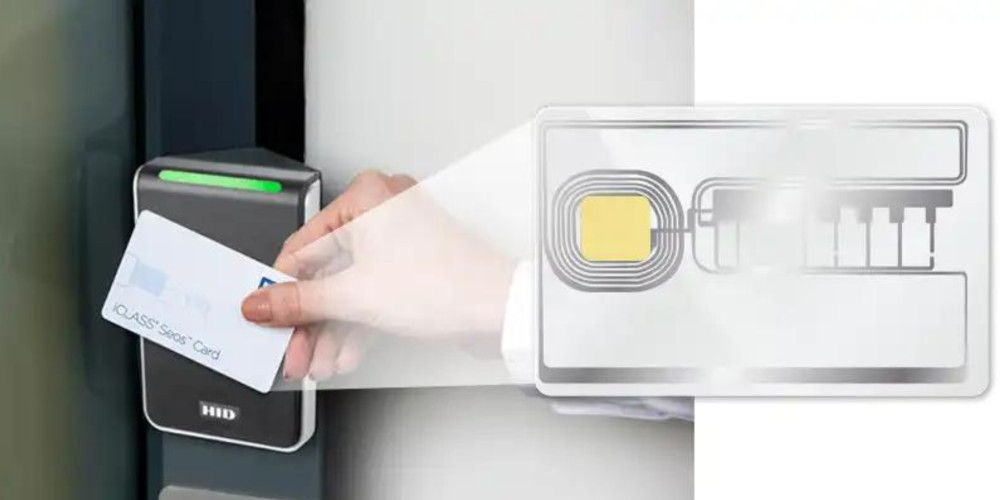
Smart Cards:
What They Are: Cards that use a private key stored on the card for authentication.
Why Use Them: Best suited for sectors with stringent security requirements like government and finance.
Example: Employees use a smart card and PIN for two-step verification to access secure systems.
Security Considerations: Physical security of the cards is crucial, as lost or stolen cards can be exploited if PINs are compromised or guessed.
certificate icon
Software Certificates:
What They Are: Authentication using a device’s Trusted Platform Module, combining a passphrase with a private key.
Why Use Them: Common for secure login to networks or sensitive applications.
Example: Utilising Windows Hello for Business, employees authenticate with a software certificate stored in a TPM for secure access.
Security Considerations: Certificates must be properly managed and updated to prevent exploitation; revocation lists must be maintained to ensure compromised certificates cannot be used.

Physical OTP Tokens:
What They Are: Devices that generate a time-limited, one-time password.
Why Use Them: Useful for secure, one-time access to critical systems.
Example: Employees use a physical device that generates time-limited OTPs for an added layer of security.
Security Considerations: Like with security keys, the physical security of OTP tokens is essential. Additionally, systems should be in place to quickly revoke access if a token is reported lost or stolen.

Mobile Apps:
What They Are: Applications on smartphones generating time-sensitive authentication codes.
Why Use Them: A cost-effective solution for businesses with mobile device users.
Example:Employees install an authenticator app on their smartphones, using codes for authentication.
Security Considerations: Ensure mobile devices are secure and up to date to prevent malware from capturing OTPs. Educate users on the importance of securing their mobile devices with strong passwords, biometrics, and keeping the software up to date.
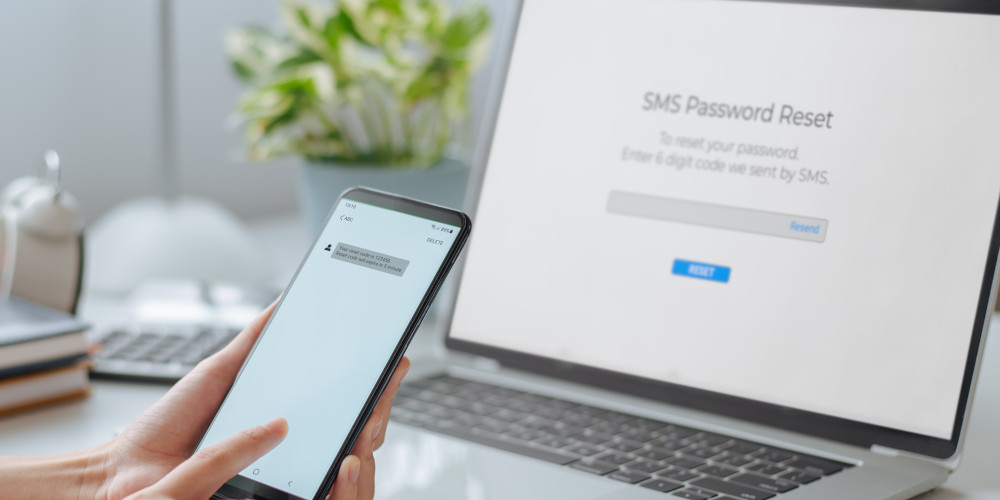
SMS, Emails, or Voice Calls:
What They Are: Methods that send a one-time code via SMS, email, or voice call.
Why Use Them: Convenient for a user-friendly MFA option, though with potential vulnerabilities.
Example: Users verify their identity during login by receiving a one-time code through their chosen method.
Security Considerations: Vulnerable to interception (e.g., SIM swapping for SMS). Use as part of a layered security approach or for non-critical access. Consider stronger methods for sensitive information.

Biometrics:
What They Are: Authentication methods using unique biological traits, like fingerprints or iris scans.
Why Use Them: Ideal for devices with built-in biometric scanners for enhanced security.
Example: Employees use biometric recognition (fingerprint or facial) on smartphones to access company applications securely.
Security Considerations: Ensure the storage of biometric data is secure and complies with privacy regulations. Be aware of limitations and potential for false positives/negatives and have alternative authentication methods available.
Best Practices for Secure Implementation:
To ensure seamless integration, consider the following best practices:
- User Education: Conduct workshops to educate employees about the importance of MFA and how to use different methods securely.
- Gradual Implementation: Introduce MFA gradually, starting with less sensitive systems to allow users to acclimate to the new authentication methods.
- Scenario-Based Training: Provide training sessions based on different scenarios employees might encounter, emphasizing the appropriate use of each MFA method.
- Continuous Monitoring: Implement continuous monitoring to detect any anomalies in the usage of MFA methods, enhancing overall security.
By tailoring the choice of MFA methods to specific scenarios, educating employees on their secure use, and implementing continuous monitoring, small businesses can effectively strengthen their cybersecurity defences. Multi-Factor Authentication is a cornerstone of cyber resilience, enabling small businesses to elevate their cybersecurity posture.
As we navigate the complexities of cybersecurity, implementing Multi-Factor Authentication (MFA) is not just a recommendation; it’s a necessity for safeguarding your business’s future. Don’t wait for a security breach to realise the value of your digital safety. Take the first step today by evaluating your current security measures and considering which MFA methods align with your business needs. Need help getting started? Reach out to our team who can guide you through the process, ensuring that your business is fortified with the best defences against cyber threats. Remember, in the digital age, being proactive about your cybersecurity is the key to staying one step ahead of attackers. Secure your business’s digital doors with MFA today.

by Renee Bean | Aug 23, 2023 | Cybersecurity, IT Support Brisbane
Safeguarding your business against the ever-evolving realm of cyber threats has become an immediate and critically important responsibility. As cybercriminals get smarter with their tactics, it’s clear that just reacting to issues as they happen is not enough. To truly defend your digital space, you need a strong cybersecurity plan that involves a variety of actions. These actions should help you spot, reduce, and even stop possible threats before they turn into major problems. This article dives into this proactive approach and gives you practical steps that any business can use to boost their digital security.
1. Employee Training and Awareness: Educate your employees about cybersecurity best practices, such as recognising phishing emails, using strong passwords, and reporting suspicious activities. A well-informed team can act as an additional line of defence.
2. Regular Security Audits: Conduct periodic security audits to assess your systems for vulnerabilities. Identify and address potential weak points before they can be exploited by cybercriminals.
3. Penetration Testing: Perform controlled hacking simulations (penetration tests) to uncover potential vulnerabilities in your systems and applications. This proactive approach helps you identify and rectify weaknesses before actual attackers can exploit them.
4. Vendor and Third-Party Risk Management: Assess the cybersecurity practices of your vendors and third-party partners. Weaknesses in their systems can potentially affect your own security.
5. Data Encryption: Implement robust encryption protocols to protect sensitive data both in transit and at rest. Encryption adds an extra layer of security even if a breach occurs.
6. Multi-Factor Authentication (MFA): Enforce the use of MFA for accessing critical systems and data. This adds an extra layer of verification beyond just passwords.
7. Regular Software Updates and Patch Management: Keep all software, including operating systems and applications, up to date with the latest security patches. Vulnerabilities in outdated software can be exploited by attackers.
8. Incident Response Plan (IRP): Develop a comprehensive incident response plan outlining the steps to take in case of a cyber-attack. This ensures a swift and coordinated reaction to mitigate potential damage.
9. Backup and Recovery Strategy: Establish a regular data backup schedule and verify the ability to recover data in case of an attack. Data loss due to a breach can be mitigated with a robust backup plan.
10. Secure Remote Work Practices: Implement secure remote work practices, especially considering the rise of remote work. Ensure that remote employees are following proper security measures.
11. Security Information and Event Management (SIEM): Consider deploying SIEM tools that monitor and analyse network activity in real-time, detecting and responding to potential threats.
12. Regular Training and Certification: Invest in ongoing training and certification or outsource your IT and cybersecurity teams to ensure your systems and knowledge and procedures are up to date with the latest security trends and techniques.
Remember, cybersecurity is an ongoing effort, and staying vigilant is key to maintaining a strong defence against evolving threats. By implementing a combination of these proactive measures, you can significantly reduce your business’s exposure to cyber risks.
Questions? Reach Out to Us Here & We’ll Call You
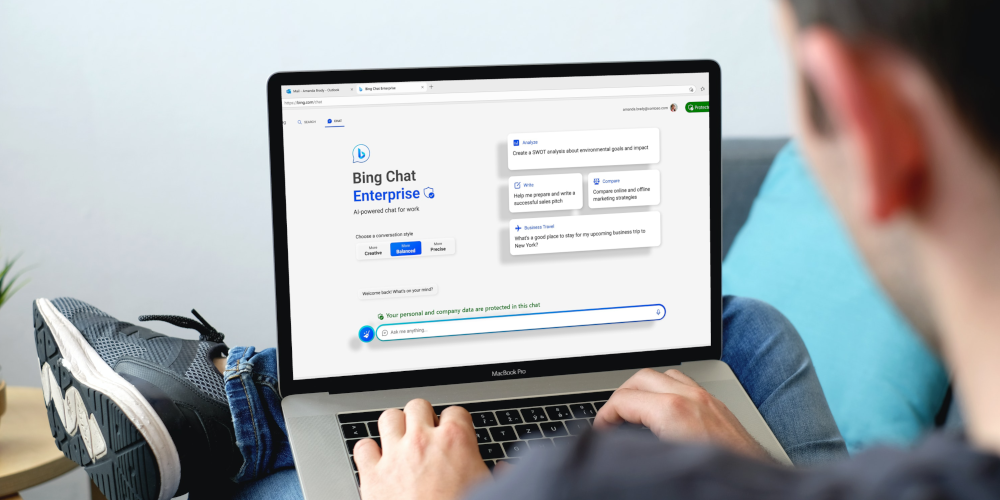
by Renee Bean | Jul 20, 2023 | Cybersecurity, IT Support Brisbane, Microsoft, office365, Solutions
An AI Solution Ensuring Data Protection
As the use of AI tools increase in businesses, data privacy and security have also emerged as critical concerns. Companies are cautious about using generative AI tools due to the risk of confidential information leaks. This week Microsoft introduced a preview of Bing Chat Enterprise, a revolutionary AI-powered chat tool that prioritises data protection. This article explores Bing Chat Enterprise’s features and its ability to address data privacy concerns associated with AI.
Recently launched in preview mode, Bing Chat Enterprise will be available in selected Microsoft 365 plans at no extra cost. Designed for companies hesitant about generative AI, it ensures users’ chat data is not saved or used for AI model training. This protection sets it apart from OpenAI’s ChatGPT as well as other AI tools including the AI powered Bing which utilise user prompts for training unless they opt out.
Bing Chat Enterprise alleviates concerns about accidental sharing of confidential information. Its secure service prevents potential leaks, complemented by manual and automated reviews that monitor inappropriate behaviour, ensuring ethical business communication.
Microsoft confirmed to The Telegraph that Microsoft cannot view your company data, adding that the service offers “commercial data protection.” Bing Chat Enterprise utilises OpenAI’s GPT-4 model with both automated and manual reviews, ensuring proprietary and confidential data remains protected.
Microsoft’s launch of Bing Chat Enterprise reflects its dedication to developing AI-powered tools with the utmost privacy and security for businesses. The tool’s introduction indicates a growing demand for AI solutions in the business world, with data protection at the forefront.
Bing Chat Enterprise offers more than data protection; it provides a glimpse into the future of AI-powered tools. To foster trust between businesses and AI developers, addressing privacy and security concerns becomes paramount as AI tools become more widespread. Bing Chat Enterprise is a promising opportunity for businesses seeking secure AI solutions for communication needs, without the fear of data leaks.
In an interview with Fox Business, Yusuf Mehdi revealed that Bing Chat Enterprise unlocks AI for everyone in the workplace, prioritising data protection. Additionally, Microsoft’s M365 Co-Pilot aims to facilitate real-time meeting summaries and seamless integration with Teams & PowerPoint, expanding AI use cases in workplaces.
Microsoft’s Bing Chat Enterprise marks a groundbreaking step in AI-powered tools for businesses. By ensuring data privacy and security, this chat tool empowers companies to leverage AI confidently. With Bing Chat Enterprise, millions of users can harness AI’s potential in various use cases, fostering a new era of AI-powered collaboration and productivity. As AI becomes an integral part of the workplace, Microsoft sets a positive example for the industry by prioritising data protection.
Questions? Reach Out to Us Here & We’ll Call You















